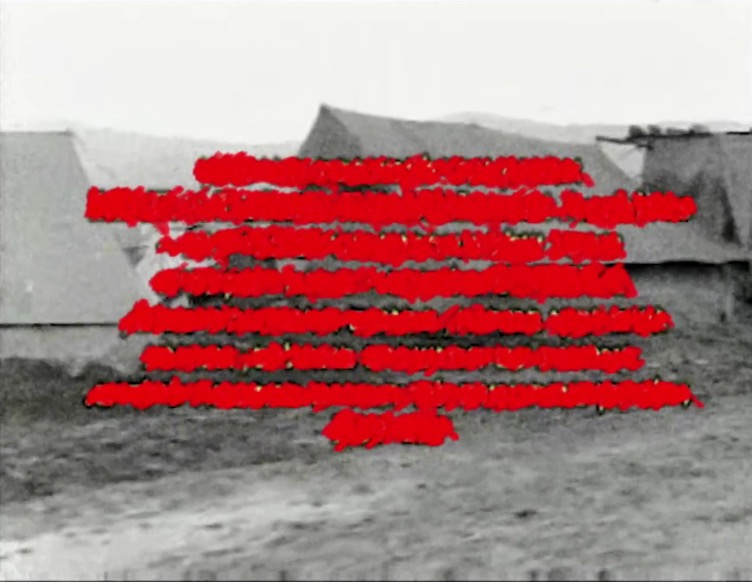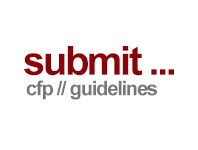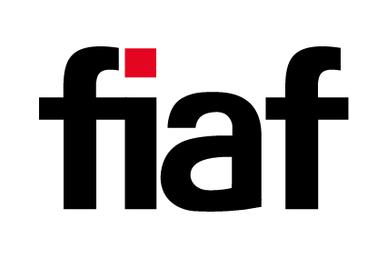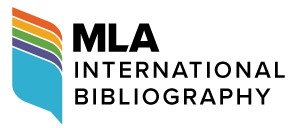Confronting the Empire: Militant Archival Practices in Testimonies from Fallujah and A Fidai Film
Pablo Alvarez
[PDF]
Abstract
This essay exploresthe appropriation and creative interpretation of audiovisual archivesin cinematic representations of the Iraq war and the Israel/Palestine conflict. It showcases the political possibilities of imperial archives inTestimonies from Fallujah (Hamodi Jasim, 2004) and A Fidai Film (Kamal Aljafari, 2024), two medium-length compilation films that repurpose American and Israeli hegemonic media and fictional footage. Despite their historical, geopolitical, and production differences, the two films share a similar engagement with and against the imperial film and media archive. This essay examines the two films’ archival practices. It argues that the reuse of imperial materials in Testimonies from Fallujah and A Fidai effectively disputes underlying imperial discourses and structures of power in the mediation and filmic representation of the Iraq war and the conflict in Palestine.
Dossier
Audiovisual archives of global conflicts rooted in imperial projects are, for the most part, produced, disseminated and preserved under the auspices of the Empire. As such, “our cognitive apprehension of the war” is, citing Judith Butler, “actively structured” by imperial powers (66). From media newsreels, fictional and nonfictional films to military footage, these materials present a constructed and heavily politicised reality that showcases the “story of colonialism [and imperialism] from the coloniser’s perspective” (Shohat and Stam 108). From this perspective, the violence exercised by the Empire—both materially in conflict settings and epistemic in the production, collection and storage of the material representing them—is often ignored or, even worse, legitimised. The dominance of an imperial perspective in Western media and film, plus the unquestionable sacredness and objectivity gained by the archive that preserves these materials, transform the categories, practices and discourses inscribed in the imperial archive as inevitable and a “fait accompli” (Azoulay 549). The imperial archive emerges in this context as what Azoulay calls an “imperial technology”: a “synergetic machine of imperial violence” that plays a significant role in imperial enterprises and colonial rule (Azoulay 43; Kokotovic 162).
The media and film archive of the 2003 Iraq War and of the long-standing conflict in Palestine are clear expressions of this form of violence. The mediation and filmic representation of the US invasion and occupation of Iraq was heavily controlled and supervised by the US political elite and the military. The overtly partisan “embedded” media reporting covered the invasion 24/7 in unprecedented closeness to the frontline with Coalition troops; along with substantial number of fictional films narrating the experiences and aftermath of US soldiers in Iraq. These would produce a Western hegemonic view of the conflict and a visual archive showcasing the experiences and suffering of US soldiers, while obliterating the Iraqi human and material cost of the invasion (Barker; Miller). The history of representation and archiving of the conflict in Palestine is not dissimilar. From the plundering of Palestinian archives during the invasion of Beirut in 1982, to the denial of Palestinians’ existence and culture in Israeli fictional films (Shohat)—let alone the current Israeli total control over any access to Gaza, including the obstruction to a media presence—the construction and preservation of an audiovisual archive of the conflict in Palestine has, as in the Iraq War, been dominated by imperial political and military powers.[1]
However, imperial archives of global conflicts do not only serve as instruments for the exercise and reproduction of power. Depending on how they are “read” or interpreted, imperial archives (written or visual) can also be used to scrutinise the ideological bias and frameworks they promote, as well as the practices and conditions that sustain them. For the last few decades, historians, literary critics and anthropologists have challenged the “excessively told grand narratives of colonialism” by turning to read the archives ‘“against the grain’ of colonial conventions” (Stoler 50). This critical research method engages in what Stoler describes as tactics of “inversion and recuperation” that, on the one hand, interrogates the realities and official knowledges extracted from colonial archival materials to expose the power structures that permeate them (47). On the other hand, this method recasts the human agency of the colonial subject by rescuing their “hidden histories”. Visibly influenced by the works of Jacques Derrida and Michel Foucault, in this critical approach the colonial archive is conceived not as a repository of historical knowledge but as a site of power relations, a social practice in which historical knowledge is constructed (Russell 13; Sanchez-Biosca qtd. in Cuevas 42). Such an understanding of, and engagement with, archival materials denotes an “archival turn” which also has strong resonance in contemporary archive-based film and art practices. As Catherine Russell notes, “the film archive [for archive-based filmmakers] is no longer simply a place where films are preserved and stored but has been transformed, expanded, and rethought as an ‘image bank’ from which collective memories can be retrieved” (1). Understood as an image bank, the audiovisual archive is therefore not merely a window to the past but becomes a cinematic “language” worked “against itself by fragmenting, destroying, and ruining the narrativity of the source material” (12). This paper explores such work against the imperial archive in cinematic representations of the Iraq war and the Israel/Palestine conflict. It showcases the political possibilities of imperial archives in Testimonies from Fallujah (Hamodi Jasim, 2004) and A Fidai Film (Kamal Aljafari, 2024), two medium-length compilation films that repurpose American and Israeli hegemonic media and fictional footage.
Testimonies from Fallujah is an overlooked exposé videoabout the destruction of the city by US forces in November 2004. Directed in a guerilla style under extreme conditions in the midst of the occupation, this documentary video interweaves audiovisual materials found online—media footage and amateur stills—with interviews made by Jasim and unpublished on-location footage of Iraqi witnesses and survivors borrowed from local journalists with access to Fallujah. The video was made by Jasim’s independent company Al-Qitaf productions, and commissioned and then distributed by the activist group CODE PINK, who created DVD copies to be sold in the US. A Fidai is a more cryptic, experimental compilation film that intervenes on colonial audiovisual archives of historical Palestine from the British Mandate to the post-1967 period. The point of departure of the film is the plundering of Palestinian audiovisual archives from the Palestinian Research Centre by the Israeli Defence Forces (IDF) during the invasion of Beirut in 1982. Aljafari restores some of these colonized images and combines them with other digitally manipulated colonial archival material that includes scenes from Israeli fictional films, military footage, or scenes of Israeli daily life. The film is Aljafari’s third recent work made with colonial found footage (the two others are the short films Paradiso XXXI,108 (2022) and UNDR (2024)). Unlike Testimonies from Fallujah, the film does not concentrate on a single event but, as Aljafari himself puts it, it functions as “a way to comprehend the backgrounds and the long history of occupation in Palestine”.
These two documentaries address different historical periods and geopolitical contexts and are made under different conditions of production and exhibition. In addition, they reflect two disparate cinematic approaches to the archive. In Testimonies from Fallujah, the archive is used to reconstruct the event in an informative way, in line with conventional historical documentaries. A Fidai, on the contrary, is an experimental work that engages with the archive in a more imaginative, playful, creative, and speculative way (Hochberg ix).[2] Despite these differences, the two films share a similar engagement with and against the imperial film and media archive. I argue that the reuse of imperial materials in Testimonies from Fallujah and A Fidai effectively disputes underlying imperial discourses and structures of power in the mediation and filmic representation of the Iraq War and the conflict in Palestine. Moreover, I contend that the films not merely expose but also confront the imperial violence intrinsic in these materials. In other words, the violence of the archives is exposed in these two films and used against the powers that produce and preserve them.The two films analysed here have received hardly any scholarly attention.[3] While A Fidai is a new release currently circulating in multiple international festivals, Testimonies from Fallujah has not received any filmic analysis or criticism (Ginsberg220–21). The aim here is therefore to analyse and highlight the political relevance of these representations of the Iraq War and the conflict in Palestine overlooked in academic writing. In addition, this paper hopes to contribute to the study of archival film practices by mapping and connecting recent archive-based militant filmmaking practices in the Middle Eastern region.
Testimonies from Fallujah: Dialectical Montage and Antagonistic Discourse
The so-called Battle of Fallujah was the heaviest engagement of the US combat forces since the Vietnam War (Culloty 153). Taking place in one of the most populated cities in the country, the offensive was the second attempt to crush the Iraqi Sunni resistance rooted in that city, the first taking place in April 2004 and having resulted in the withdrawal of US combat forces. This second operation involved heavy airstrikes and the mobilisation of thousands of American, British, and Iraqi soldiers on the ground. It also included the blockade of aid entering the city and, as it has been documented, the use of white phosphorous over civilians. Over two thousand Iraqis were killed, and an estimated 200,000 lost their homes in a brutal and asymmetrical assault considered illegal under international law (Culloty). Far from eradicating it, the attack ignited widespread public backlash against the occupiers. Despite the intensity of this major offensive, the siege of Fallujah went largely unreported by traditional mass media, back then still the main source of information about the war. The event was covered by selected US media embedded with Coalition troops and framed as an honourable battle for pacification and as a spectacular deployment of war machinery against an invisible enemy. Hamodi Jasim’s compilation is one of the only few videos that stands in stark opposition to this Western hegemonic perspective of the assault. [4] Testimonies from Fallujah appropriates this propagandistic material to both reveal its unilateral and biased perspective and to antagonise and condemn US military violence over Iraqis. In an early sequence, Jasim juxtaposes spatial and temporal incoherent shots taken from US soldiers’ point of view with local footage of the aftermath of a military attack over an Iraqi household. The sequence opens with footage from inside Fallujah depicting amateurish rooftop long-shots of explosions and columns of smoke coming from the buildings, of tanks marching through the streets, or of Apache helicopters hovering in the sky. A series of intercut jerky, pixelated hand-held scenes unfold, showing US military gunshot POVs and tanks shooting indiscriminately from rooftops or from the streets (Figs. 1 and 2).
Figures 1–4: Sequence of juxtaposed perspectives through rhythm montage in Testimonies from Fallujah. In Figure 4 (bottom, right), A woman in shock desperately yells for her son: “His legs! My son Ali!”, while two men run to assist her. Directed by Hamodi Jasim, Al-Qitaf Productions, 2004. Screenshots.
This initial imagery strategically shows the perpetrator’s view and exposes the perspective that dominated Western media accounts of the war, which was, as the voiceover narration reminds us, the only coverage available of the event. From the time that one of the tanks fires over a distant building, and just before the projectile reaches its target that we never see exploding, the narrator highlights the paradox of the techno-spectacle witnessed. Speaking over the diegetic gunshots and bombs storming the town, the narrator says: “They are firing, but at whom?” What the next scene reveals is no longer part of the soldier’s view, but a devastating scene of a destroyed building covered by smoke, dust and rubble (Fig. 3). Soon we meet the woman’s son, heavily wounded and with one leg amputated, being carried by the two men, who struggle to take him outside the house that, we now realise, has been bombed.
This sequence reveals the rarely seen human effects of a US military offensive over the Iraqi population. Supported by the voiceover narration, the materials are assembled through what Eisenstein described as rhythm montage, a technique also known as continuity editing that combines temporally and intentionally disparate shots or scenes to articulate a coherent and seamless narrative. The construction of this sequence fulfils a dialectical function, for the collision of the two oppositional perspectives brings new political meanings to the resulting narrative. This montage interrogates the inadequacy of the unilateral and propagandistic media coverage of the assault. In her study of the ethics of audiovisual appropriation, Jaimie Baron argues that the insertion of “minority bodies or voices into texts aligned with dominant identities and ideologies […] make visible the erasure or distortion of minority identities and experiences in mainstream media” (21). In this sense, the juxtaposition of video footage exhibiting the violence of US military forces with that of suffering Iraqi civilians exposes what has been erased from embedded accounts of the assault, thus “dislocating”, using Baron’s term, the “hegemonic gaze” of the war (113).
Crucially, the dialectical montage consolidates a political anti-occupation discourse that antagonises American combat forces, turning them into perpetrators and prompting solidarity with the Iraqi population. By assembling these temporally disparate yet interrelated perspectives, the video presents not a clinical operation but a violent military aggression. The recontextualisation of imperial media archive then functions dialectically to interrupt the ideological framework into which it is originally inscribed, thus transforming what is represented as a justifiable and bloodless military operation into an indiscriminate attack against innocent civilians.
Digital Interventions to the Imperial Archive in A Fidai
In A Fidai, the opposition to the occupying power is addressed through a series of interventions in which the colonial archive is reappropriated and digitally manipulated. These interventions take place in the form of digital scratching over texts added by the IDF on looted Palestinian archives (Fig. 5), or by covering the sea in red and thus turning the water into blood.

Figure 5: Scratching over IDF’s captions on looted Palestinian archives in A Fidai.
Directed by Kamal Aljafari, 2024.Screenshot.
This latter digital effect is also used on Israeli characters and actors, as well as military weaponry, in Israeli fictional and nonfictional footage (Fig. 6). In an excerpt from an Israeli fictional film (unclassified due to copyright issues), Aljafari covers in red the faces and bodies of a settler couple conversing in a relaxed and confident manner, first on the seashore and then on a rounded table amidst ruins somewhere in Jaffa (Fig. 7). “They have to pay attention to us”, a first actor tells the other. “Why?”, the second character asks. “Because after all, we are here”, the first person replies while the camera zooms into a medium shot of him sitting in an arrogant pose with his foot on the table, with the ruins behind him.
Figure 6 (above): Defacing Israeli soldiers from military imagery. Figure 7 (below): In this appropriated scene from a fictional Israeli film, Aljafari covers in red the faces and bodies of a settler couple chatting and sitting in an arrogant pose amidst the ruins of Jaffa. A Fidai. Screenshots.
In this clip, the imperial image is not contextualised (as in Testimonies from Fallujah) but digitally intervened. Along with the recovery of plundered Palestinian archives, the use of digital effects to deface Israeli actors, but also settlers or Israeli weaponry from aerial footage of Israeli attacks in nonfictional footage, intervenes in the original footage to perform what Aljafari himself describes as “a work of sabotage against the colonial archive” (Aljafari qtd. in Kandalaft et al. 2023). This sabotage represents a formal novelty in Aljafari’s work. In a previous documentary film titled Recollection, Aljafari digitally removes Israeli actors from Israeli cult movies or Bourekas films shot in Jaffa (Aljafari’s hometown, raided and occupied in 1948). The removal of these “cinematic occupiers”, as Aljafari describes them, constitutes what Farah Atoui calls a “decolonial reality of Jaffa”, in which the director recovers the space and brings to the fore Palestinians featuring in these films as ghosts in the background (20). In addition, he zooms in on Palestinian characters in the background and creates new images in which they appear at the forefront. By removing the actors from the diegetic space, “hidden images of residents of Jaffa […] begin to emerge on the screen—ghostly figures that have always already been there and have never left” (Hochberg 67).As in Recollection, these digital interventions constitute a decolonial practice that visually articulates “Palestinian resistance against Israeli practices of settler-colonial erasure” (Atoui 10). Yet in this practice, Israeli bodies are not erased from the diegetic space, but they remain there, uncomfortably present. By opting to deface the bodies and faces of these characters, the film reminds us of the alienating and violent presence of the Israeli occupation. Decolonisation in this context emerges not as the surgical removal of the colonial or occupier, but as a messy and cinematically violent practice against the parasitic presence of the occupier. The resulting decolonised image is, in other words, an image not freed of colonial rule, but one in which it is embedded and underscored, and must be confronted. This (cinematic) confrontation goes beyond Aljafari’s appropriation of Israeli archival material as a Palestinian without access to colonial archival materials. Moreover, it is staged in the filmmaker’s explicit intervention of the colonial footage, which proposes an act of sabotage against the colonial archive as a response to settler colonialism in historical Palestine. This exercise of sabotage is of course also implicit in the title of the film, which refers both to the Fidaiyeen, or Palestinian armed resistance, who were also named “saboteurs” by Israel, and further emphasised in the use of bright red colour, a symbol both of resistance and a signifier of blood. Finally, defacing Israeli actors provocatively reverses a long history of systematic dehumanization and stereotyping of Palestinians and Arabs in both Israeli and Hollywood films, mass media and in (video-games-like) aerial military operations (Shohat; Khatib; Shaheen). Discussing Aljafari’s film, Hamid Dabashi reminds us how “Israelis had the power to photograph, picture, paint, visualise and conquer the land they stole and colonised” (“How”). This of course resonates with a history of Orientalist discourse and negative stereotyping permeating much of Western colonial and imperial imagination of Arabs and Muslims (among other colonized people) in the region. Aljafari thus uses “the power of his occupiers against them” to create a “counter-archive” of new images that stages a different history of the occupation in Palestine (Dabashi, Dreams). Without a face, the occupiers become less or “other” than human, thus reversing a long-standing condition that was, and still is, attributed to the lives of Palestinians in colonial and imperial discourse.
Conclusion
Testimonies from Fallujah and A Fidai propose antioccupation and decolonial cinematic discourses through the rework of audiovisual imperial archives. The two seemingly disparate films interpret the imperial archive “against the grain” of dominant mediations of the Iraq War, and of cinematic portrayals of historical Palestine as a “land without people for a people without a land”. Crucially, the reinterpretation and manipulation of these materials stress the violent presence of the occupier, both militarily and as a settler colonial project. This violence—which is simultaneously masked, legitimised and reproduced in the archives—is not merely exposed in the films but confronted cinematically, turned against the imperial powers that exercise it, including the archives themselves. In Testimonies from Fallujah, the juxtaposition of hegemonic military footage with local Iraqi newsreels counters biased Western visual narratives of the siege but also serves as a discursive tool to antagonise the occupying forces. In A Fidai, the digital intervention of Israeli fictional footage by a Palestinian director constitutes a usurpation or an act of sabotage against both imperial archival conditions and discourses. The digital effect of covering Israeli actors in red recalls the settler-colonial presence of Israel in Palestinian land, but also provocatively responds against it and against the audiovisual history of dehumanization of Palestinians.
The rework of pre-existing imperial materials in these films is, therefore, an inherently militant one. It is not so much concerned with historical accuracy or objectivity but, paraphrasing Atoui, with the political activation of the archive (10). The militant archival film practices examined in the two films, I have argued, activate the imperial archive politically in ways that disrupt its original ideological contexts. In addition, this activation confronts the epistemic violence exercised by occupying powers and their imperial technologies over the lives and memories of the Palestinian and Iraqi population.
Notes
[1] Unlike in Iraq, there is a plethora of audiovisual work countering Israeli and Western hegemonic discourses. These come from media channels like Al-Jazeera (which was very active in Iraq too) and multiple organisations and activists both outside and inside Palestine, but also from the creative work of Palestinian and non-Palestinian filmmakers, first under the direction of the Palestine Liberation Organization and, later, more independently and through international funds (Dabashi, Dreams; Gertz and Khleifi).
[2] These two approaches are based on Gil Hochberg’s distinction of archival practices in her study of contemporary Palestinian artistic projects.
[3] One of the only texts about A Fidai Film beyond festival blurbs is Hamid Dabashi’s contribution to Middle East Eye (“How”). Testimonies from Fallujah is briefly mentioned in Jeffrey Geiger’s American Documentary Film and in Ellen Culloty’s Embedded Online: Iraq War Documentaries in the Online Public Sphere.
[4] Other compilation films exposing war crimes committed by Coalition forces in Fallujah and in Iraq more broadly are Fallujah: The Hidden Massacre (Sigfrido Ranucci and Maurizio Torrealta, 2005) and Iraqi Short Films (Mauro Andrizzi, 2008).
References
1. Aljafari, Kamal. Prerecorded introduction, A Fidai Film. Personal communication, Sept. 2024.
2. Atoui, Farah. “Return, Recollect, Imagine: Decolonizing Images, Reclaiming Palestine.” Postcolonial Directions in Education, vol. 9, no. 1, 2020, pp. 8–42.3. Azoulay, Ariella Aïsha. Potential History: Unlearning Imperialism. Verso, 2019.
4. Barker, Martin. A Toxic Genre: The Iraq War Films. Pluto Press, 2011.
5. Baron, Jaimie. Reuse, Misuse, Abuse: The Ethics of Audiovisual Appropriation in the Digital Era. Rutgers UP, 2020. https://doi.org/10.36019/9780813599304.
6. Butler, Judith. Frames of War: When Is Life Grievable? Verso, 2016.
7. Cuevas, Efrén. Filming History from Below: Microhistorical Documentaries. Columbia University Press, 2022. https://doi.org/10.7312/cuev19596.
8. Culloty, Eileen. Embedded Online: Iraq War Documentaries in the Online Public Sphere. 2014. Dublin City University, PhD thesis, doras.dcu.ie/20157.
9. Dabashi, Hamid. Dreams of a Nation: On Palestinian Cinema. Verso, 2006.
10. ——. “How Palestinian Director Kamal Aljafari Staged a Cinematic Rebellion.” Middle East Eye, 6 Oct. 2023, www.middleeasteye.net/opinion/kamal-aljafari-palestinian-director-staged-cinematic-rebellion.
11. Fallujah: The Hidden Massacre. Directed by Sigfrido Ranucci and Maurizio Torrealta, RAI News24, 2005.
12. A Fidai Film.Directed by Kamal Aljafari, Kamal Aljafari Studio, 2024.
13. Geiger, Jeffrey. American Documentary Film: Projecting the Nation. Edinburgh UP, 2011. https://doi.org/10.1515/9780748629466.
14. Gertz, Nurith, and George Khleifi. Palestinian Cinema: Landscape, Trauma and Memory. Edinburgh UP, 2008. https://doi.org/10.3366/edinburgh/9780748634071.001.0001.
15. Ginsberg, Terri. “Iraqi Cinema Since the US-led Invasion of 2003.” International Journal of Contemporary Iraqi Studies, vol. 10, 2016, pp. 217–228. https://doi.org/10.1386/ijcis.10.3.217_1.
16. Hochberg, Gil Z. Becoming Palestine: Toward an Archival Imagination of the Future. Duke UP, 2021. https://doi.org/10.1515/9781478022138.
17. Iraqi Short Films. Directed byMauro Andrizzi, Mono Films, 2008.
18. Kandalaft, Abla, et al. “Interview with Kamal Aljafari, Director of Paradiso, XXXI, 108.” myDylarama, 1 Feb. 2023, www.mydylarama.org.uk/Interview-with-Kamal-Aljafari-director-of-Paradiso-XXXI-108.html.
19. Khatib, Lina. Filming the Modern Middle East: Politics in the Cinemas of Hollywood and the Arab World. I. B. Tauris, 2011.
20. Kokotovic, Sima. “Archival Film Practice Behind Off Frame: Unravelling Cinematic Solidarities in the Palestinian Struggle for Liberation.” Framework: The Journal of Cinema and Media, vol. 64, no. 1, 2023, pp. 156–79. https://doi.org/10.1353/frm.2023.a914997.21. Miller, David, editor. Tell Me Lies: Propaganda and Media Distortion in the Attack on Iraq. Pluto Press, 2003.
22. Paradiso XXXI,108. Directed by Kamal Aljafari, Kamal Aljafari Studio, 2022.
23. Russell, Catherine. Archiveology: Walter Benjamin and Archival Film Practices. Duke UP, 2018. https://doi.org/10.1215/9780822372004.
24. Shaheen, Jack. Reel Bad Arabs: How Hollywood Vilifies a People. Olive Branch Press, 2014.
25. Shohat, Ella. Israeli Cinema: East/West and the Politics of Representation. U of Texas P, 1989.
26. Shohat, Ella, and Robert Stam. Unthinking Eurocentrism: Multiculturalism and the Media. Routledge, 1994.
27. Stoler, Ann L. Along the Archival Grain: Epistemic Anxieties and Colonial Common Sense. Princeton UP, 2008. https://doi.org/10.1515/9781400835478.
28. Testimonies from Fallujah. Directed by Hamodi Jasim, Al-Qitaf Productions, 2004.
29. UNDR. Directed by Kamal Aljafari, Kamal Aljafari Studio, 2022.
Suggested Citation
Alvarez, Pablo. “Confronting the Empire: Militant Archival Practices in Testimonies from Fallujah and A Fidai Film.” Alphaville: Journal of Film and Screen Media, no. 29–30, 2025, pp. 236–245. DOI: https://doi.org/10.33178/alpha.2930.14
Pablo Alvarez is an independent researcher whose research focuses on ethics and politics in documentary film, with a particular focus on filmic representations of contemporary conflict in the SWANA region. He is the codirector of Falasteen on Film, a cultural organisation in Birmingham that showcases Palestinian cinema and connects it with local arts and communities, and for the last years he has coordinated Screening Rights, the Midlands International Festival on human rights films and debate.











